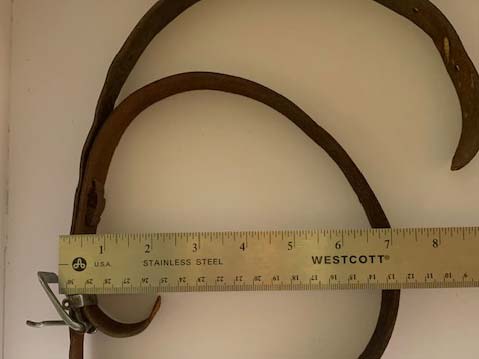The Belt

The young boy was walking down the street in Łodz, Poland, when he spotted the treasure. He could not believe his luck! He picked up the belt admiring its beautiful etchings and the decorative metal buckle. With his chest out, he proudly continued walking down the street with his new treasure rolled up and safe in his pocket. Now he would be able to wear long pants instead of the short pants and suspenders young boys wore. His new belt would rocket him from boyhood to manhood status! What a monumental find!
Little did the young boy know, at that moment in 1936, that his new belt would be the only prewar item that would stay with him throughout the Holocaust. Gedalia barely survived five-and-a-half years under Nazi occupation. Like every European Jew during the Holocaust, the arrival of the Germans signaled sudden and dramatic life altering changes. Daily murders were common. Hunger then starvation was every Jew’s constant companion. We have seen the walking skeletons on film footage. Gedalia was one of those Jews. He survived four-and-half years in the Lodz Ghetto. He managed to remain alive an additional nine months as he was packed up and shipped to Auschwitz, then Braunsweig, Masherode, Vechelde, Watenstedt, Ravensbruck, Ludwigslust before nearly dying in Wobbelin.
Once the war was over, Gedalia, like the other survivors, regained his weight and shed his Holocaust appearance. But the belt did not return to its original appearance. The beautiful belt, that had stayed with him throughout the war, was scarred. As Gedalia had lost weight a notch was forced through the belt’s skin. With each step towards death through starvation, the belt’s skin was speared again and again. By May 1945, the belt had been punctured eight times with each hole an inch from the preceding one. By the time Gedalia was liberated, on May 2, 1945, the diameter of the belt encircling his waist was a mere seven inches, about the size of my thigh.
Gedalia, my father has passed. The belt remains as the only witness to his starvation and endurance.
One may wonder how Gedalia managed to keep the belt when the Nazis confiscated any item a Jew may have had. Perhaps, like survival under extreme circumstances, it was luck. Perhaps, the Germans figured the belt would be confiscated off of Gedalia’s corpse when he perished. I cannot say. I only know that the survival of the belt, like my father, was precious.
Like this article? Get our e-newsletter.
Be the first to learn about new articles and personal stories like the one you've just read.
